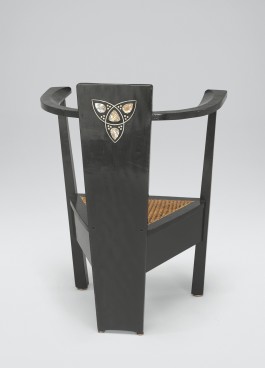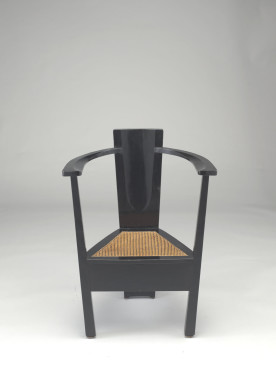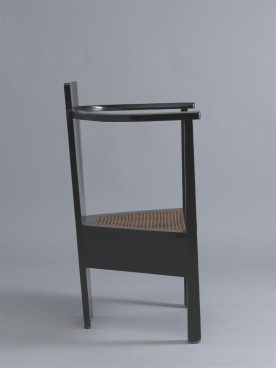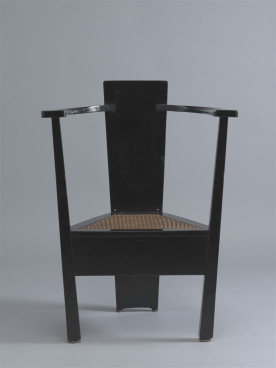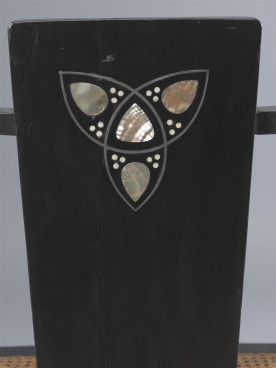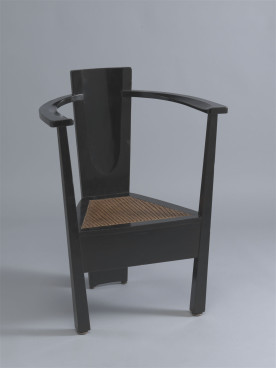Armchair, c.1901–2
Ebonised wood inlaid with pewter, ivory and mother-of- pearl and cane
This chair is one from a pair designed by M.H. Baillie Scott for the Werkstätten Exhibition, Dresden (1903–4), and made by Dresdener Werkstätten für Handwerkskunst, Dresden.
Adam Bowett Catalogue 14/08/2012
Description
An ebonised armchair, 1901-2. The chair is of triangular form, with a vertically tapered back dished to accommodate the sitter; the reverse face of the back is inlaid with a pointed trefoil design in mother of pearl, ivory and pewter. The caned seat is between outcurved flat arms raised on square section splayed and tapering posts, on compressed ball feet.
Dimensions
H: 32 ¾ “ (83cm) Seat height: 14 ¼ ” (36cm) W: 24 ¼ ” (62cm) D: 18“ (46cm)
Designer/Maker
Designed by M.H. Baillie Scott (1865-1945) and made by Dresdener Werkstatten fur Handwerkskunst.
Materials
Beech and other woods
Dating Criteria
This chair was produced by the DWH about 1902-3.
Construction
The back is a single board extending from the floor to the top. The seat rails are housed into the back, perhaps tenoned, and supported on the inside with substantial triangular screwed blocks. The arms are housed into the back and probably mortised onto a stub tenon on top of the front posts. The front posts are connected by a deep seat rail, presumably tenoned, and the side rails are similarly tenoned into the posts. The seat is constructed of four pieces, forming a sharply trapezoidal frame; the back rail is tenoned into the side rails but at the front the joint between side and front rails is mitred, perhaps with a tongue or tenon securing it.
Condition
The chair is sound but has clearly suffered in the past. There are vertical cracks evident in the back and a split in the front right post above the seat. The finish may be original in part but there is clear evidence of re-touching where damage had occurred and around joints such as where the arms are fixed into the back. There are two holes drilled in the back at seat level, perhaps to tie a cushion in position. The cane is possibly original. The left side of the seat frame has a serious and potentially disastrous split along the line of the cane holes. There are domed metal gliders on rubber pads to each of the four feet – it is not possible to determine whether these are original.
Provenance
By descent from a Dresden family
Christie’s, London, 11 May 2000, lot 39 or 40.
H. Blairman & Sons

